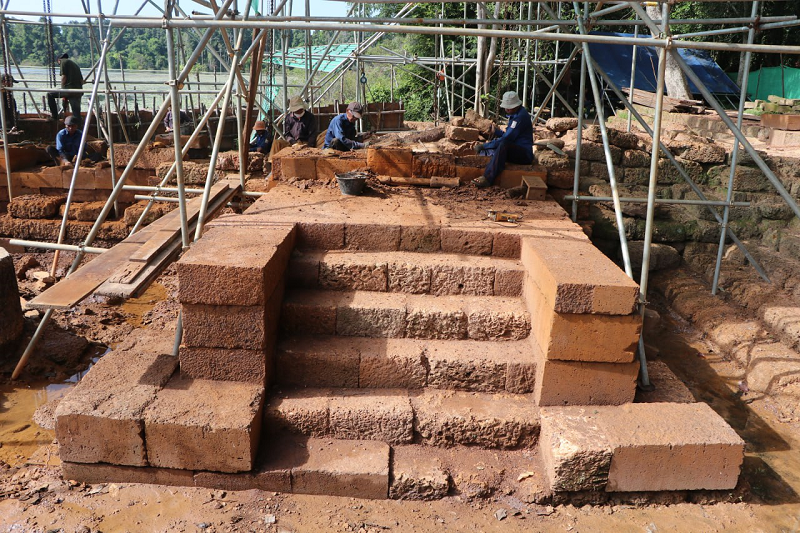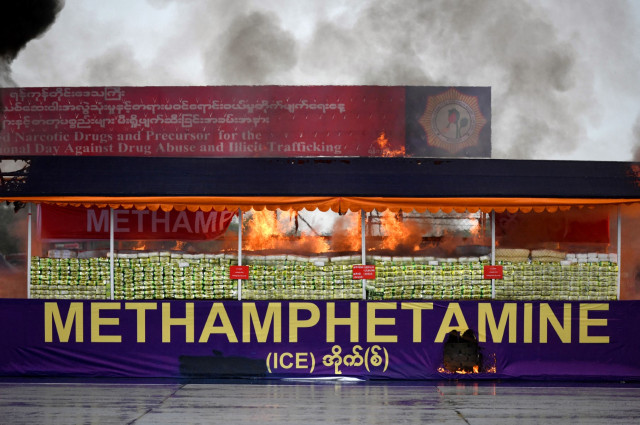The Restoration of the Preah Khan Temple’s Quay Progresses

- By Isa Rohany
- August 27, 2023 5:00 PM
SIEM REAP — The restoration of the Preah Khan temple’s kampong—or quay—that started in early 2023, has now entered its second phase. Its goal is to improve the structural integrity of the kampong, which is located on the eastern side of the temple and connects it with the nearby Neak Pean reservoir.
The 12th century temple in Siem Reap province is one of the main tourist attractions in the Angkor Archaeological Park that is located around 13 kilometres north of Siem Reap city.
The kampong, with its square-shape structure and three staircases oriented in three directions, is believed to have been built, like the nearby Neak Pean temple and the Ta Som temple, in the late 12th century during the reign of King Jayavarman VII.
In later periods, the stones used for the kampong were removed and put to other use, which made the structure unstable as water seeped in and the soil was pushed out.
After studying the kampong structure, Chea Sarith, an archaeologist with the APSARA National Authority, identified two layers of walls, one built of limestones, which is the outer layer, while the inner layer is made of laterite stones. However, as he mentioned, only some outer stones remain.
According to archaeological research, the kampong was renovated time after time since it was originally built.
“The inscription at the Preah Khan temple tells us that the temple itself, the Neak Pean temple and the reservoir were renovated,” said Chea Sarith. “This is due to the need of raising the reservoir to store more water for agriculture and people’s use.”

As Sarith explained, what has helped conclude that works had been done several times on the reservoir and the kampong is the difference in stones used in various areas of the kampong and reservoir, with some stones being more oddly placed than others, meaning that laterite stones had been laid on top of limestones.
An archeological team of the École française d'Extrême-Orient (EFEO) in 1927 had observed the same thing when its archeologists had removed the sediments and the plants that were covering the kampong, Sarith said.
The kampong might have been used by the king in Angkorian times to conduct religious activities at the Neak Poan temple in the middle of the Neak Poan reservoir.
With the first phase of restoration having started in 2022, and the second phase in 2023, the restoration of the Preah Khan temple’s kampong and nearby Neak Pean reservoir in 40 percent achieved as of the end of August 2023.
Written in Khmer for ThmeyThmey News, the article was translated by Ky Chamna for Cambodianess News.
For more articles on the Preah Khan temple:
Preah Khan: a Khmer Temple Displaying both Hindu and Buddhist Traditions
To Honor His Father, the King Constructed a Grandiose Temple called Preah Khan















